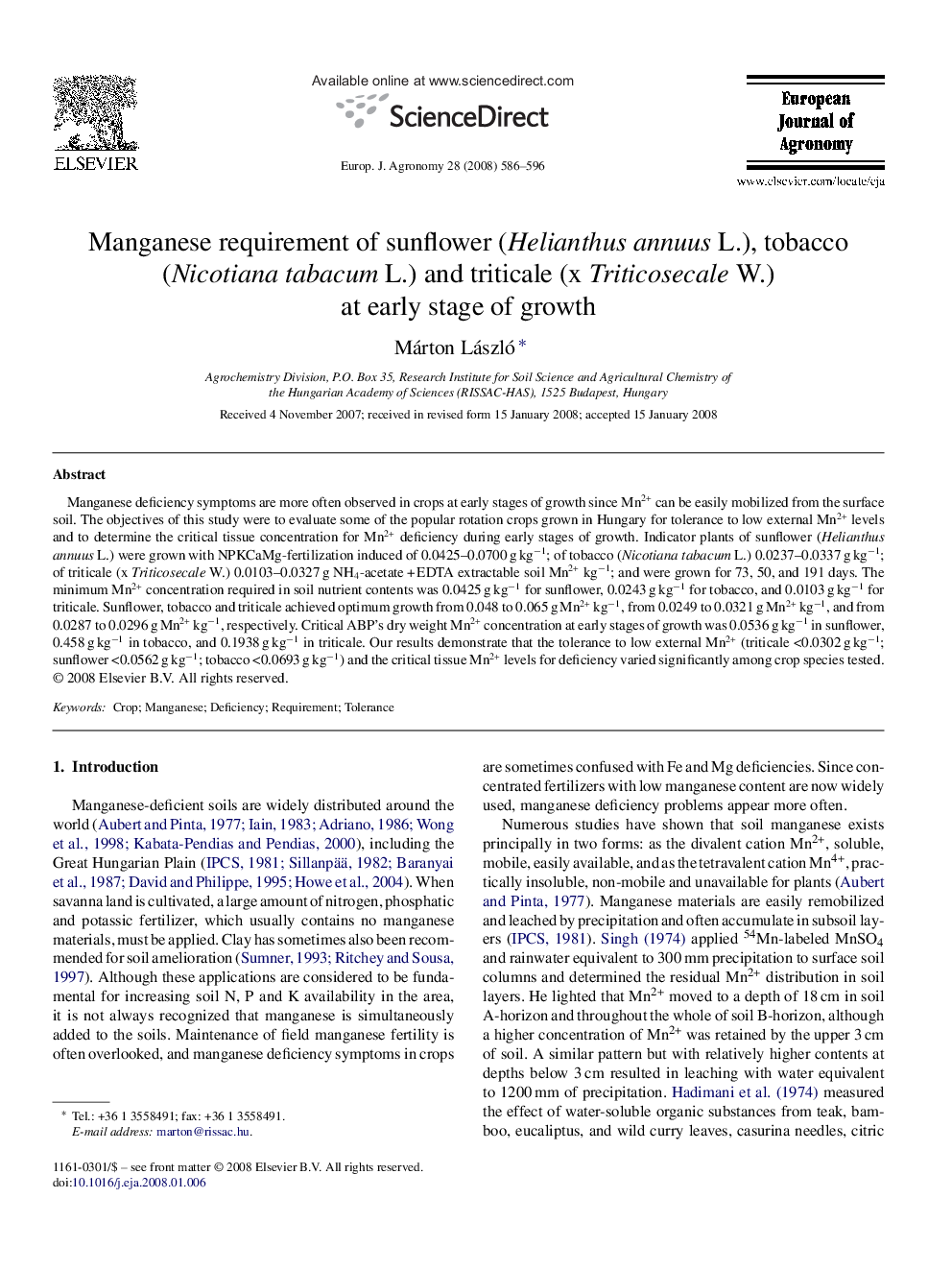| Article ID | Journal | Published Year | Pages | File Type |
|---|---|---|---|---|
| 4509595 | European Journal of Agronomy | 2008 | 11 Pages |
Abstract
Manganese deficiency symptoms are more often observed in crops at early stages of growth since Mn2+ can be easily mobilized from the surface soil. The objectives of this study were to evaluate some of the popular rotation crops grown in Hungary for tolerance to low external Mn2+ levels and to determine the critical tissue concentration for Mn2+ deficiency during early stages of growth. Indicator plants of sunflower (Helianthus annuus L.) were grown with NPKCaMg-fertilization induced of 0.0425-0.0700 g kgâ1; of tobacco (Nicotiana tabacum L.) 0.0237-0.0337 g kgâ1; of triticale (x Triticosecale W.) 0.0103-0.0327 g NH4-acetate + EDTA extractable soil Mn2+ kgâ1; and were grown for 73, 50, and 191 days. The minimum Mn2+ concentration required in soil nutrient contents was 0.0425 g kgâ1 for sunflower, 0.0243 g kgâ1 for tobacco, and 0.0103 g kgâ1 for triticale. Sunflower, tobacco and triticale achieved optimum growth from 0.048 to 0.065 g Mn2+ kgâ1, from 0.0249 to 0.0321 g Mn2+ kgâ1, and from 0.0287 to 0.0296 g Mn2+ kgâ1, respectively. Critical ABP's dry weight Mn2+ concentration at early stages of growth was 0.0536 g kgâ1 in sunflower, 0.458 g kgâ1 in tobacco, and 0.1938 g kgâ1 in triticale. Our results demonstrate that the tolerance to low external Mn2+ (triticale <0.0302 g kgâ1; sunflower <0.0562 g kgâ1; tobacco <0.0693 g kgâ1) and the critical tissue Mn2+ levels for deficiency varied significantly among crop species tested.
Related Topics
Life Sciences
Agricultural and Biological Sciences
Agronomy and Crop Science
Authors
Márton László,
